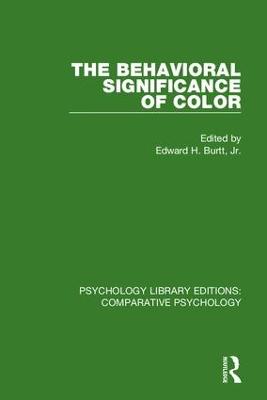
Prior to publication the study of animal coloration was plagued by fanciful speculations, post hoc explanations and untestable hypotheses. This title, originally published in 1979, draws together widely scattered research into the coloration of animals; formulates predictive hypotheses to account for color; documents the accuracy of many of these hypotheses; and suggests directions for future research. The book grew out of a symposium, The Behavioral Significance of Color at the 1977 meeting of the Animal Behavior Society, and presents evidence concerning patterns of coloration and their influence on animal behaviour and interaction Physical principles of radiation are discussed in Chapter 1, followed, in subsequent chapters, by an examination of the physiological functions of animal coloration (e.g. thermoregulation, hydroregulation, abrasion-resistance, extraretinal photoreception). Treatment of coloration that affects the animal’s visibility to other animals opens with a masterful overview of theories of color vision and its occurrence throughout the animal kingdom. Chapter 6 explores the role of color vision and fruit color in the selection of food by wild primates with comments on the coevolution of fruiting trees and their primate customers. Dr Jack P. Hailman addresses the elusive concept of conspicuousness. He summarizes a strategy for calculating conspicuous coloration based on measurements in natural habitats. Experiments, naturalistic observations and anecdotes of optical communication are exceedingly numerous. Chapters 8 and 9 review these data and suggest general principles of inter- and intraspecific optical communication. Each chapter is enhanced by the critical evaluations of Drs. C. Richard Tracy and W. J. Hamilton III. In closing, the editor discusses coloration as it affects an animal’s own vision (e.g., black eyelines to reduce glare). Most significantly the book emphasizes the need for a balanced, scientifically rigorous approach to the question of evolution of animal coloration. It is an important source for anyone contemplating or currently involved in research in this field of investigation.
| ISBN: | 9781138574960 |
| Publication date: | 22nd February 2018 |
| Author: | Jr., Edward H. Burtt |
| Publisher: | Routledge an imprint of Taylor & Francis Ltd |
| Format: | Hardback |
| Pagination: | 472 pages |
| Series: | Psychology Library Editions: Comparative Psychology |
| Genres: |
Zoology and animal sciences Evolution |